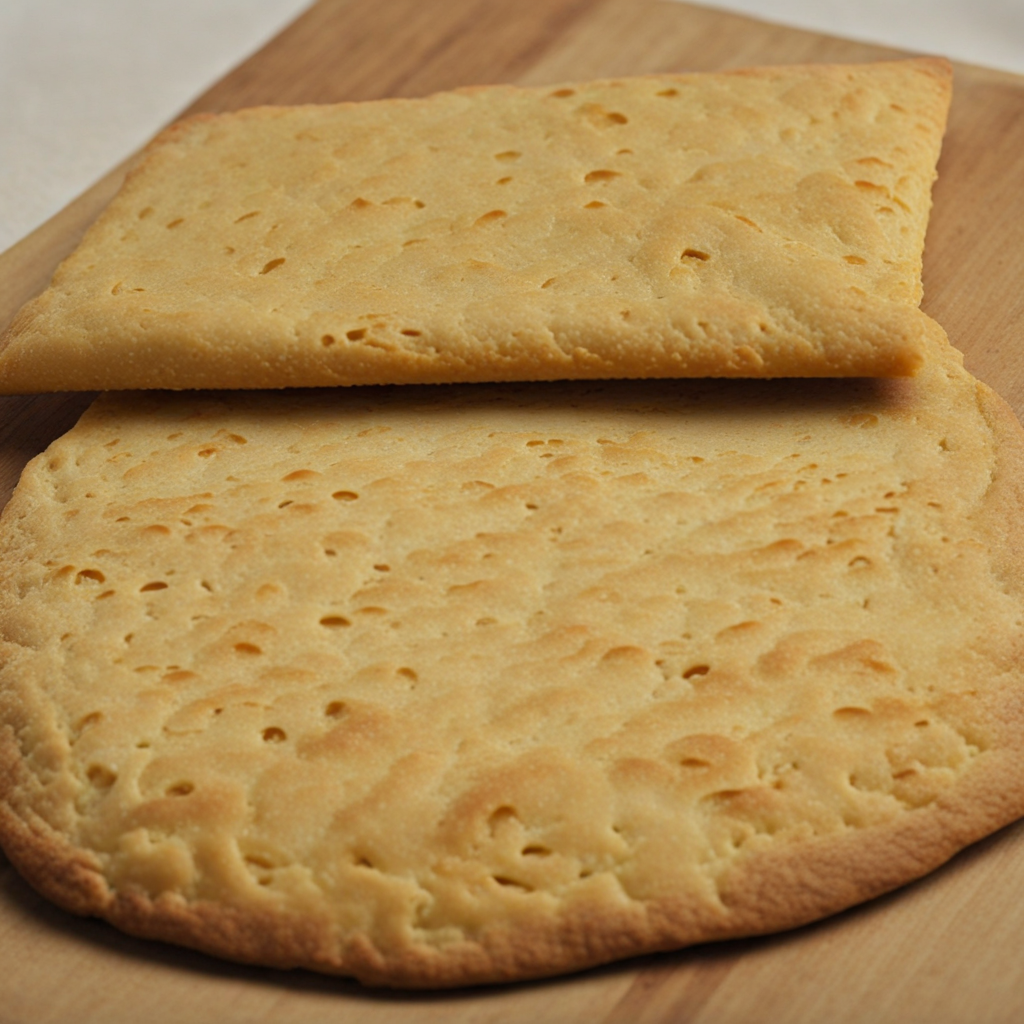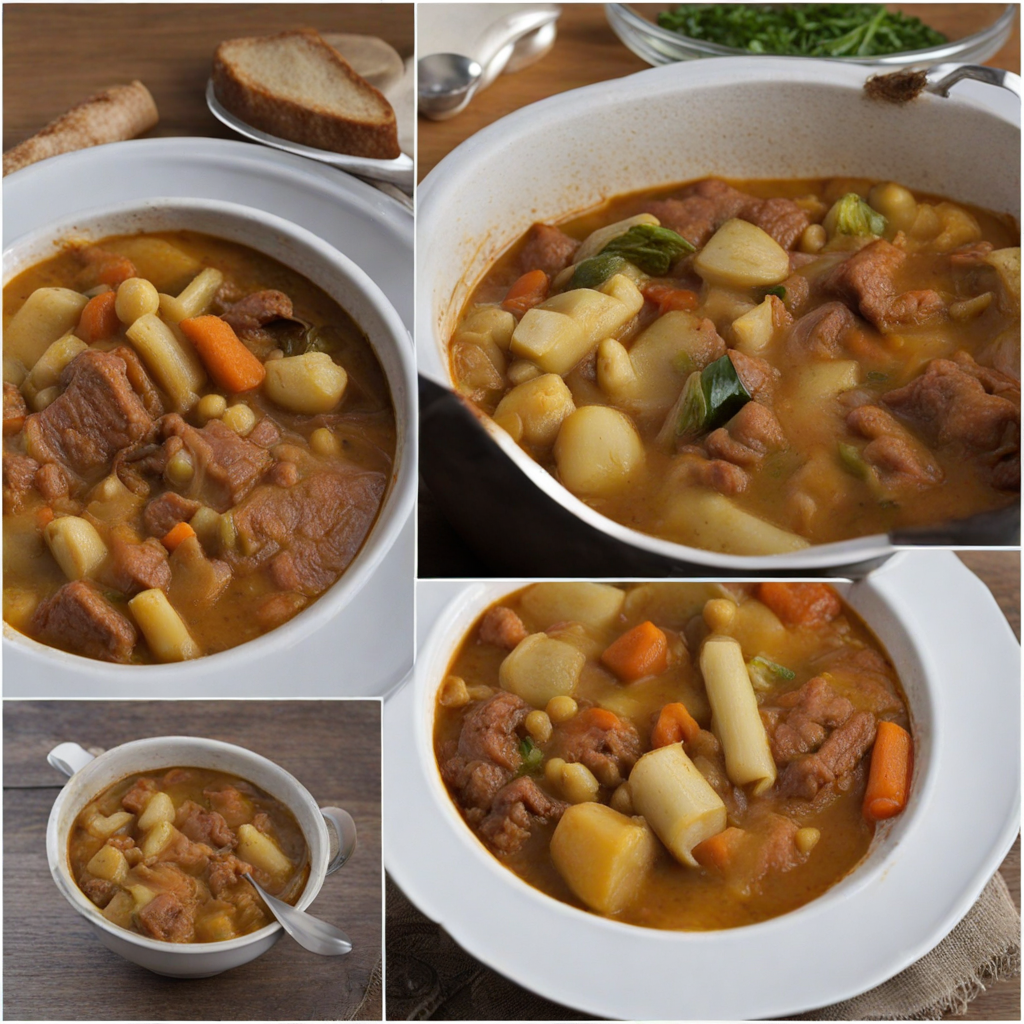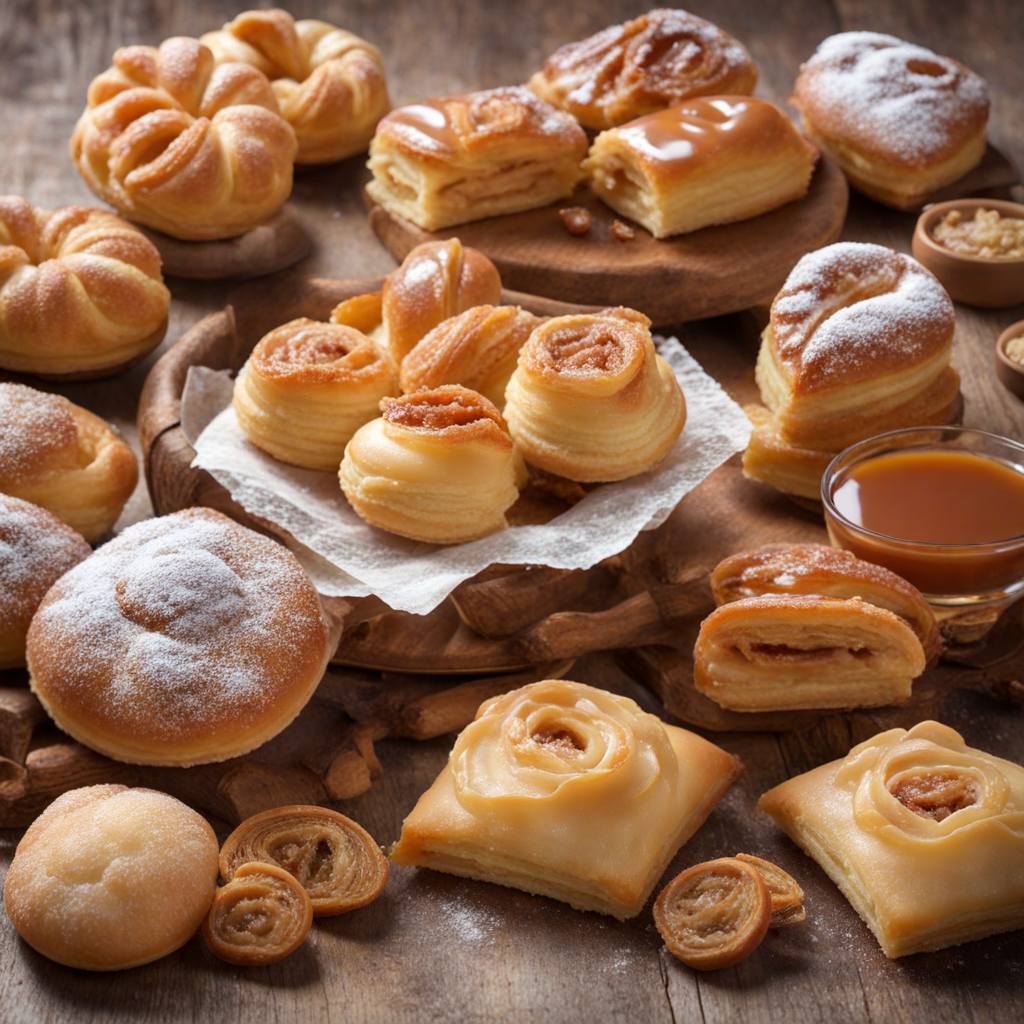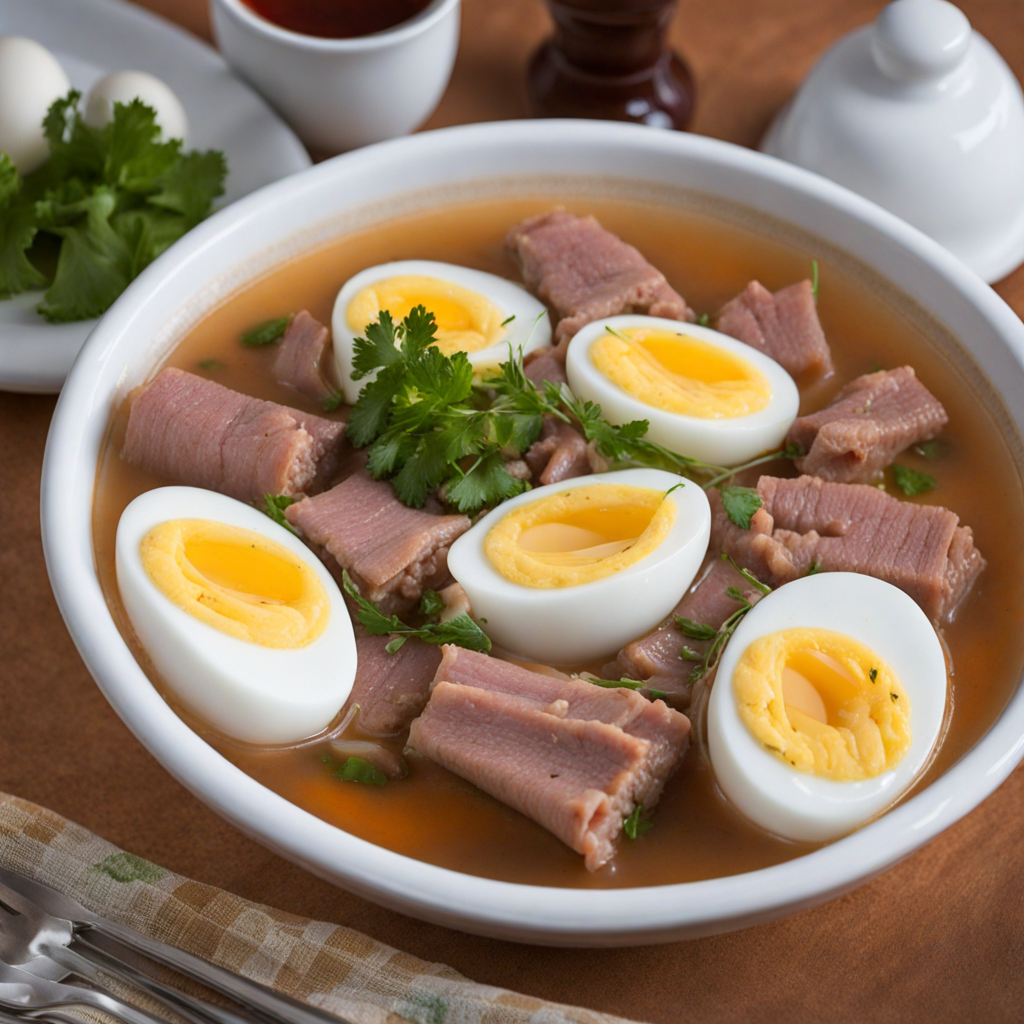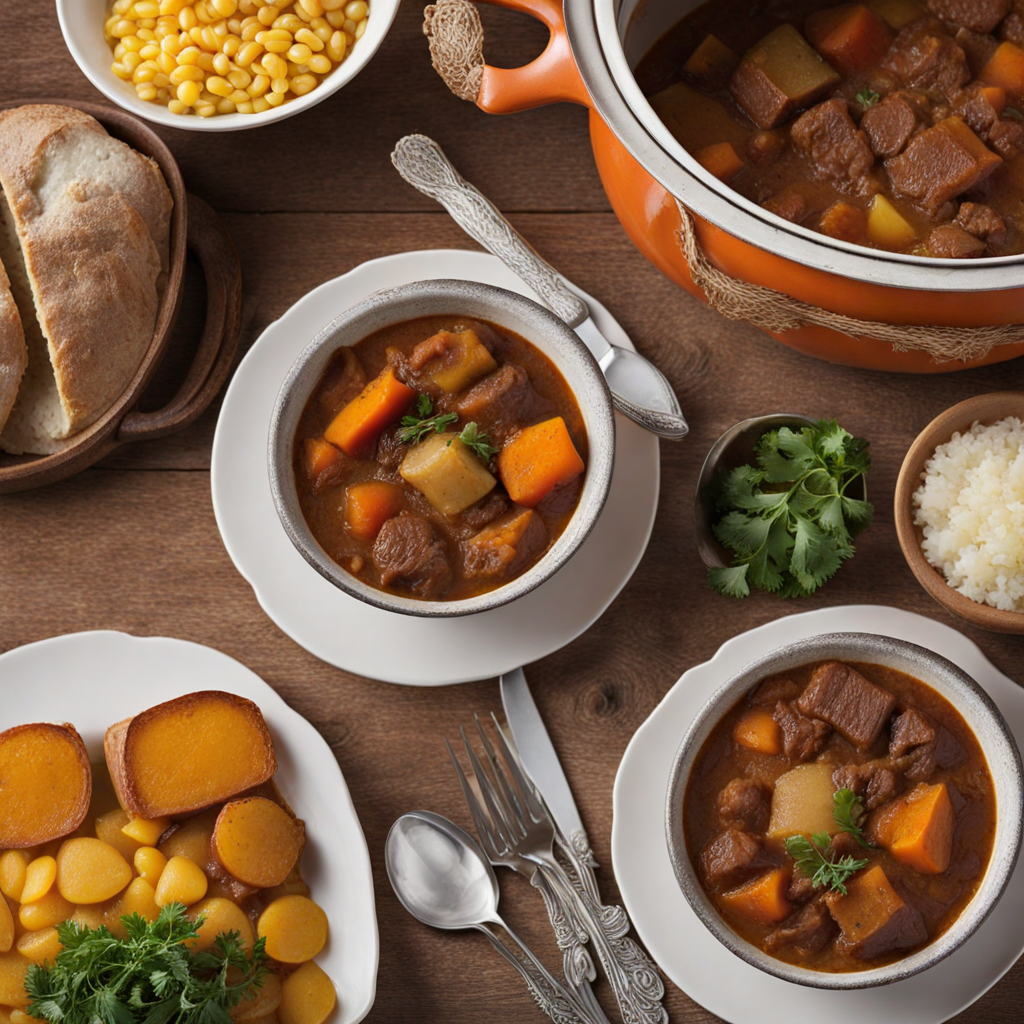Fainá
Fainá is a delightful and savory Argentine dish made primarily from chickpea flour, water, and olive oil, resulting in a wonderfully unique flavor and texture. Originating from the Italian farinata, this dish has been embraced by Argentine cuisine, particularly in Buenos Aires, where it is commonly enjoyed as a street food. Fainá is typically baked in a round, flat shape, yielding a crispy exterior while maintaining a soft, slightly moist interior that is both satisfying and comforting to the palate. One of the most appealing aspects of Fainá is its versatility. The base preparation can be enhanced with various seasonings such as salt, pepper, and herbs, allowing for a range of flavors that can cater to different tastes. Often served as a side dish to accompany pizza, Fainá creates a delightful combination, with the chickpea flour's nuttiness beautifully complementing the rich, cheesy flavors of the pizza. Additionally, it can be enjoyed on its own, perhaps with a drizzle of olive oil or a sprinkle of grated cheese on top for an extra layer of decadence. This dish is not only a treat for the taste buds but also a nutritious option, being rich in protein and fiber due to its chickpea base. Fainá is gluten-free, making it an excellent choice for those with dietary restrictions. Whether you’re tasting it for the first time or revisiting a beloved dish, Fainá promises a delightful experience that captures the essence of Argentine culinary tradition while offering a taste of something new and exciting.
How It Became This Dish
Origin of Fainá Fainá, a traditional Argentine dish, traces its origins to the Italian flatbreads known as "farinata," which emerged from the coastal region of Liguria in the 14th century. The dish was created as a way to utilize chickpea flour, which was abundant and affordable. As Italian immigrants brought their culinary traditions to Argentina in the late 19th and early 20th centuries, farinata evolved into fainá, adapted to local tastes and ingredients. The chickpea flour was combined with water, olive oil, and salt, resulting in a simple yet delicious flatbread that quickly gained popularity among the working-class communities in Buenos Aires. Fainá is typically baked in a round, shallow pan, yielding a crusty exterior and a creamy interior. The method of preparation remains rooted in the traditional practices brought over by Italian immigrants, who often cooked it in wood-fired ovens. This cooking technique not only imparts a unique flavor but also gives fainá its characteristic texture, making it a beloved staple in many Argentine households. \n\n Cultural Significance In Argentina, fainá holds a special place in the food culture, often served as a side dish accompanying "pizza." This pairing is a unique Argentine custom, showcasing the influence of Italian cuisine while highlighting local preferences. The combination of fainá and pizza is emblematic of the country's culinary fusion, where Italian recipes were infused with Argentine flavors and ingredients. The dish's significance extends beyond its taste; it represents the rich tapestry of immigrant stories that shaped Argentina's identity. Fainá is often enjoyed in family gatherings, celebrations, and pizzerias, where it brings people together over shared meals. In a way, fainá has transcended its humble origins, becoming a symbol of community and cultural heritage, celebrated by both locals and visitors alike. \n\n Development Over Time As time progressed, fainá adapted to changing tastes and culinary trends in Argentina. The post-World War II era saw an increase in the availability of chickpea flour and other ingredients, making fainá even more accessible to the general population. This period also marked the rise of pizzerias, which began offering fainá as a standard accompaniment to their pizzas, further solidifying its role in the Argentine dining experience. Regional variations of fainá emerged as well, reflecting the diverse culinary influences present in different parts of the country. For instance, some regions began to incorporate herbs and spices into the batter, adding depth of flavor and enhancing the dish's overall appeal. This creativity sparked the development of gourmet fainá, made with artisanal flours and topped with various ingredients, such as cheese, olives, or even vegetables. \n\n Fainá in Modern Cuisine In contemporary Argentina, fainá continues to thrive, often showcased in both traditional pizzerias and upscale restaurants. Chefs and home cooks alike experiment with innovative recipes, incorporating organic and locally sourced ingredients to elevate the dish. Some have even developed gluten-free versions using alternative flours, catering to dietary preferences while maintaining the essence of this classic dish. Fainá's versatility has also allowed it to transcend its role as merely a side dish. It is now often enjoyed as a standalone snack or appetizer, served with dips or toppings that enhance its flavor profile. The growing interest in Argentine cuisine on the international stage has further popularized fainá, with food enthusiasts eager to explore this unique flatbread as part of their culinary journeys. \n\n Fainá and the Pizza Culture Fainá's close association with pizza is a defining characteristic of Argentine cuisine. The custom of ordering fainá alongside pizza is so ingrained in the culture that it has become a rite of passage for anyone indulging in Argentine culinary delights. The soft, buttery fainá complements the crispy, cheesy pizza, creating a harmonious balance of textures and flavors. This pairing is particularly popular in Buenos Aires, where pizzerias abound, and it serves as a cultural staple across generations. Pizzerias in Buenos Aires often display signs proclaiming their fainá offerings, and locals can be seen happily pairing their slices with this beloved flatbread. The tradition has even been embraced by food festivals, where fainá takes center stage, showcasing its importance in Argentine gastronomy. Events dedicated to celebrating local ingredients and culinary heritage frequently feature fainá, emphasizing its status as a treasured dish. \n\n Fainá in Popular Culture Fainá has also made its way into Argentine popular culture, often referenced in literature, music, and art as a symbol of comfort and nostalgia. Many Argentine writers and musicians evoke memories of family gatherings centered around shared meals, with fainá being a prominent element of those experiences. Its presence in cultural narratives highlights the deep emotional connections that food can foster, serving as a reminder of home and heritage. Moreover, social media has played a significant role in elevating fainá's profile among younger generations. Food bloggers and influencers showcase their fainá creations, experimenting with toppings and flavor combinations, and sharing their culinary explorations with a global audience. This online presence has sparked renewed interest in traditional dishes, encouraging a new appreciation for the history and cultural significance of foods like fainá. \n\n Conclusion Fainá is much more than just a simple flatbread; it is a testament to the resilience and creativity of Argentine culture. Rooted in its Italian ancestry, fainá has evolved to become a beloved staple that reflects the fusion of culinary traditions in Argentina. Its significance in social gatherings, cultural narratives, and modern dining experiences ensures that fainá will continue to be enjoyed by generations to come, preserving its legacy as a cherished element of Argentine gastronomy.
You may like
Discover local flavors from Argentina


